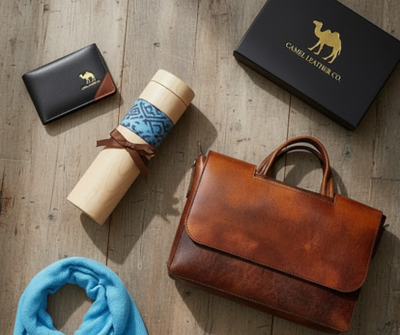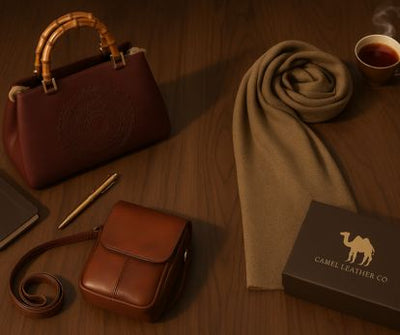Why is the Pashmina scarf so exclusive?
Kashmiri Pashmina is one of the most luxurious materials ever created. It has also taken centuries of trial and refining to elevate shawl manufacturing from a necessity to a distinct textile art form. The pashmina shawl is one of the most sought-after wraps in the world. Pashmina shawls are made through a time-consuming and labor-intensive process in which beautiful Cashmere wool from a Himalayan goat is humanely sourced and treated for years to produce the world-famous Kashmiri Pashmina.
What exactly is Pashmina?
The skill of handcrafting premium clothes and accessories from the downy undercoat of the Himalayan goat is known as Pashmina. Pashmina is derived from the Persian term 'pashm,' which means soft gold, and 'mina,' which means hair. The voyage of the Pashmina dates back to the 15th century in the Kashmir Valley of India. The Changthangi goats reside in the Changthang region of Ladakh – India, at an elevation of 15000 feet above sea level. It's also worth noting that Pashmina is a finer kind of Cashmere. Thus while all Pashmina is Cashmere, not all Cashmere is of Pashmina quality.
The Pashmina Industry
The Pashmina industry blossomed in the 16th century under the reign of Emperor Akbar, who granted Pashmina the status of imperial patronage. Pashmina shawls were historically a privilege worn by monarchs and aristocrats. For generations, affluent families in Kashmir, India, and Nepal have contributed magnificent Pashmina shawls as a part of their daughter's wedding gifts.
Here are 5 reasons which make the Pashmina scarf so exclusive:
-
Limited availability of raw material
An adult Changthangi Pashmina goat may produce approximately 250 to 400 gm of useable Pashmina after carding (removal of coarse hair) and washing. Because each goat produces so little, the supply is extremely restricted. Only one tiny Cashmere Pashmina scarf can be manufactured with 150-200 gm fiber. A genuine Cashmere Pashmina shawl takes two to three goats' wool.
-
The production process
The Pashmina production process is rigorous and needs multiple labor-intensive phases to achieve aesthetic outcomes. Pashmina shawls have been made on handlooms for generations as the wool is too fragile for mechanized processing. Only a qualified artisan can make expert shawls and scarves with complex embroidery that gives Pashmina its charm and grandeur. Depending on the labor, a single Pashmina piece might take a week to a decade.
-
The fiber
Cashmere is one of the finest fibers found naturally. It is around 80 microns finer than a human hair strand. Pure Cashmere is eight times warmer than garments made of sheep wool. It can absorb colors and moisture readily. It's fine, soft, light, and five times as insulating as sheep wool.
Cashmere Pashmina fiber from Ladakh and Western Tibet is grade A because the fiber diameter is less than 14 microns. The lower the diameter, the better the grade. The diameter of Mongolian Pashmina from China is typically 14 to 16 microns.
-
Quality
Pashmina is made from the finest wool, which is hand-picked and sorted by a master weaver. The wool is then dyed using natural vegetable dyes imported from Kashmir. The wool is then spun, woven, and finished by hand. This ensures that each piece of Pashmina is truly one of a kind and will last for years to come.
-
Design
Pashmina has been made using traditional designs passed down through generations of weavers. Our designers carefully choose these patterns to complement each other perfectly while retaining their individuality. We also use traditional techniques such as embroidery, lace work, and tassels which add a touch of luxury to every piece.
Finally
When it comes to fashion, some things can instantly make a woman feel special. A luxurious coat or a pair of shoes can do the trick. However, when you want to go that extra mile and add something unique to your wardrobe, the best way is with pashmina scarves. Pashmina is a luxurious fabric that can be worn all year round and will add a touch of elegance to any outfit. It makes for the perfect gift for friends and family, especially those who love wearing scarves!
At Nomadic Camel, we have one of the most magnificent Pashmina collections you've ever seen. Made of 100% pure Pashmina and certified authentic, our Pashmina collection with distinctive Pashmina styles and endless designs developed by our hardworking weavers makes them distinct and apt for every occasion.
We care for our highly-skilled Kashmiri artisans as much as we do for our loving clients. To improve the well-being of Kashmir's artisan community, we donate 5% of our profits to the artisan community. By purchasing these printed wraps now, you can make a difference in their lives in your own little way!
FAQs
What is so special about Pashmina?
Pashmina is derived from an animal fiber Cashmere obtained from the Changthangi goat of Ladakh. It is well renowned for its warmth, lightweight, and softness, as well as its dye-absorbing ability.
How can you tell if a Pashmina scarf is real?
When it comes to determining the authenticity of a Pashmina shawl, the Burn test is the most widely utilized. To test your Pashmina using the burn test, just burn a fringe of your shawl. If it emits the odor of burnt hair, this is likely a genuine scarf.
What is the difference between a scarf and a Pashmina?
Pashmina scarves are adored all around the world. However, Pashmina is not a scarf in and of itself. It is the skill of handcrafting scarves from excellent Cashmere. Pashmina scarves are smaller in size than Pashmina shawls. Here are the measurements of several varieties of Cashmere wraps.
Which country is famous for Pashmina?
Pashmina fiber from Kashmir, India is the most luxurious of natural fibers. It's no surprise that it's so expensive. Apart from India, other nations that manufacture the fiber include Mongolia, China, Iran, Afghanistan, and Nepal. Yet, the Pashmina from India is the greatest due to the Kashmiris who spin and weave by hand.



 Same Day Delivery in Dubai
Same Day Delivery in Dubai
 Secure Checkout
Secure Checkout
 Free Shipping in UAE
Free Shipping in UAE
 Worldwide Shipping
Worldwide Shipping